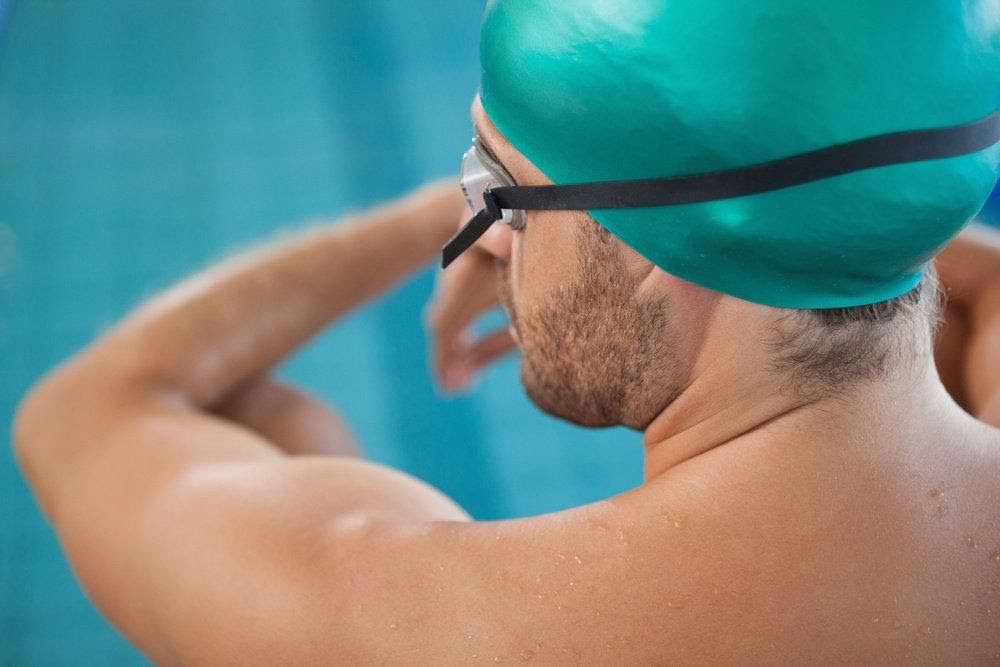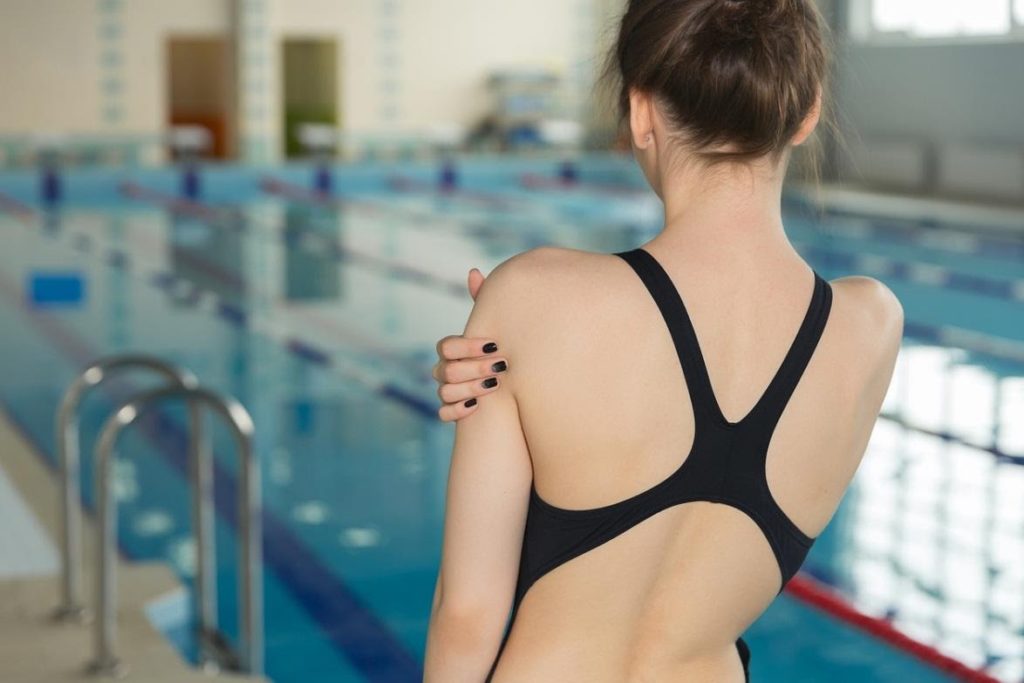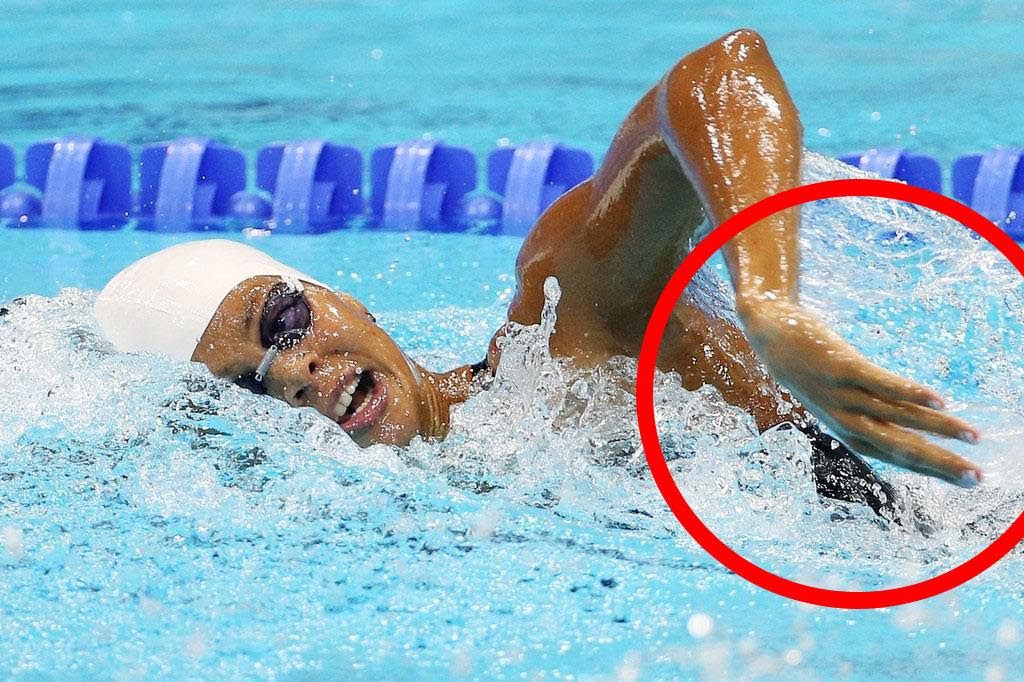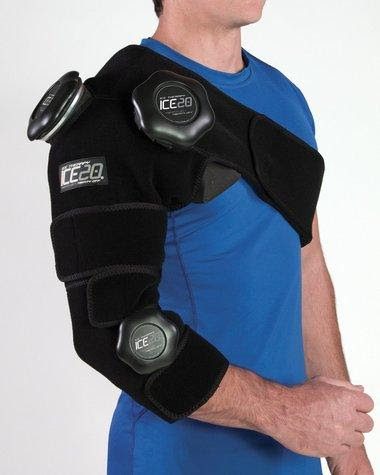The human shoulder is one of the largest and complex joints in the body. Its joint is often formed due to the upper arm bone fitting into the shoulder blade in a ball and socket manner.
Similarly, other crucial bones in the human shoulder include:
- The acromion. This is a bony projection off the scapula.
- The clavicle. Which harbors the collarbone, which meets the acromion in the acromioclavicular joint.
- The coracoid process. Which looks like a bony projection straight from the scapula.

Meanwhile, the shoulder possesses several other amusing structures such as:
- The rotator cuff contains muscles and tendons surrounding the shoulder while giving it the support required to allow a wide range of movement.
- The bursa: This is a small sac of fluid that cushions down and equally guards the rotator cuff’s tendons.
- A cuff called the labrum forms something like a ball-like head for the humerus to gently fix into.
As soon as the humerus fits into the shoulder joint, there is every possibility for the shoulder to get a wide range of movement, even though this makes it open to get injured.
Swimmer’s Shoulders Injuries
Every time you swim, at different hours, you have to rotate the muscles in your shoulders. And by regularly doing this, you are prone to be afflicted with a shoulder injury. According to the National Center for Biotechnology Information, between 40-90% of swimmers are afflicted with a shoulder pain called “swimmer’s shoulder.”

Thus, a swimmer’s shoulder is described in layman terms as a situation when the ball at the top of your arm bone or humerus presses against the socket or acetabulum of the shoulder blade. In this process, there are a couple of sensitive components such as ligaments, tendons, and joint capsules which may be compressed.
The word ‘impingement’ is quite valid here because you are likely to experience symptoms such as loss of mobility and intense pain.
Are you a lover of swimming but usually have constant shoulder pains? In this article, we will discuss a comprehensive guide to swimmer’s shoulders.
Common Cause of Swimmer’s Shoulders
More often than not, repeated strain in the shoulder joint causes irritation to the tendon and muscle tissues. It equally causes wear and tear on the area and can lead to the combination of joint restrictions and muscle imbalance. This may cause exertion and ultimately lead to a swimmer’s shoulder.

Meanwhile, you should know that you do not need to be a swimmer afflicted with a swimmer’s shoulder. As long as you are an athlete and uses your shoulder muscles constantly and in regular overhead motions, you can have it. Athletes that majorly fall into this category are baseball pitchers, volleyball, and tennis players. The muscle imbalance suffered by them may lead to chronic inflammation of the shoulder and unlimited pains.
Other factors that can cause swimmer’s shoulders include:
- Sub-optimal stroke technique
- Prior shoulder injury
- Poor posture outside the pool
- Inadequate rest
Swimmer’s Shoulder Symptoms
When you feel specific soreness on your shoulder, you may think you have a swimmer’s shoulder. However, not all shoulder injuries amount to a swimmer’s shoulders. When you work out daily, it’s normal for you to have pains in your shoulders. There are a few symptoms to identify this condition.

Should you experience sharp pains in the muscles around your shoulders, which would not go away anytime soon, then you may have been afflicted with a swimmer’s shoulder. Listed below are some of the most common symptoms to check if you have a swimmer’s shoulder:
- Emerging pains from the front of the shoulder to the side of the arm.
- Sharp pains in the shoulders when lifting.
- Minor pains even while resting.
Other symptoms that may similarly signify swimmer’s shoulder include:
- Loss of shoulder mobility
- Tenderness when touching the affected area
- Difficulty reaching or stretching
- Fatigue
You need to know that the difference between ordinary muscle aches and a shoulder injury is the intensity of the pain and the continuous worsening of the symptoms over a while.
Swimmer’s Shoulder Treatment
As soon as you find out you possess any of the symptoms of a swimmer’s shoulders, it would be best if you got yourself a suitable treatment.
Physical Therapy Options
If you have issues with your shoulder, which causes pain in the muscles adjoining your shoulder, you should visit a physical therapist. Physical therapy is a kind of sports medicine that will assist you in getting back to fitness from the sores on your shoulder.
Usually, a physical therapy program has many benefits in the treatment of a swimmer’s shoulder. Your therapist would manually massage your rotator cuff muscles. This would equally ease you off tension and prevent subsequent irritation.
Similarly, the therapist might make you carry out specific exercises if they discover you are not properly healed. They will target your rotator cuff muscles and strengthens them. The strengthening process would then provide adequate shoulder joint support in the course of any physical activity. This would equally make your shoulder more resistant to injury in the future.
Also, your therapist may help you recondition your shoulder not to become a weak spot along the line. Meanwhile, sports rehabilitation seems to benefit athletes a lot, and this can also assist you in continuing to swim even as you continue your rehabilitation. Several techniques can be implemented to ward off pressure away from your shoulder joints.
Alternative Options
Aside from the physical treatments that are used in the treatment of swimmer’s shoulders, other alternative treatment methods that can also be put into adoption include:

Rest
You may have to excuse yourself away from swimming for about 24 – 48hrs. However, this depends on how severe the injury is. Conversely, you might even be opportune to swim if the damage is not intense. But this would mean that you may have to reduce the yard you cover and equally avoid certain swimming styles such as butterfly, backstroke. You may have to hold on until you heal from pain to continue all of these.
Apply ice
You have to apply ice directly to the injured spot on your shoulder. This is after you have trained for 20 minutes.
Use anti-inflammatory medications
You can use anti-inflammatory drugs to decrease inflammation of the affected part of your shoulder.
Engage in rehabilitation exercises
When you engage in stretching and strengthening exercises, you will enhance every weak muscle on your shoulder joints—specifically your external shoulder rotators. The activities can be carried out with weights of between 3-5pounds. Meanwhile, you have to carry them out in a controlled manner. Do this a few times every week.
Get passive care
Passive maintenance is usually undertaken by a professional. Such may include an ultrasound, interferential current, cross friction tendon massage, post-isometric muscle relaxation, adjustments to neck and shoulder, or trigger point work.
Adjust your swimming training
Often, it is said that hand paddles are not suitable for your shoulders. However, Zoomers and other fin types will keep your body elevated in water bodies. Hence, they may help you should you experience pains with your shoulders anytime you work out. You can ask the coach to watch over your arm and body position and mechanics as you practice.
Devices/Equipment to Relieve Swimmer’s Shoulder Symptoms
When you swim, you will naturally place a tremendous amount of stress on your shoulder. The high number of shoulder revolutions carried out in practice is the primary reason that causes a swimmer’s shoulder injury.
Luckily, some devices can be used to relieve you from this. Listed below are a couple of equipment you can put into good use when you have a swimmer’s shoulder injury:
Swimmer’s Snorkel (Adult and Junior)
The swimmer’s snorkel is a fantastic tool for every swimmer. It is available in small and big sizes to cater to young and old swimmers to improve swimming technique. It aids the swimmer to glide through the water without any need to turn their heads. This implies that they can focus on underwater work and rotation just before they breathe into the stroke.
Alignment Kickboard
The alignment kickboard is designed for the essence of streamline, underwater and side kicking drills. A stabilizing hand strap helps swimmers control their boards without gripping, creating total alignment between fingers and toes.
Agility Paddles
This assists in shaping the hand of the swimmer without maintaining a proper force application through the stroke. The paddle strapped to a swimmer helps to press forward as fast as possible. However, when without straps on the paddle, the swimmer has to use force application which reduces the stress on their shoulder.
Swimmer’s Shoulder Prevention
You can prevent the occurrence of a swimmer’s shoulder injury on your shoulder. Here are a few tips for doing that:
- Listen to your body and rest your shoulder when you feel tired
- Analyze and map out your swimming routines.
- Avoid repetitive stress on the shoulder
- Perform stretching exercises or warming up before swimming.
Medical Procedures for Swimmer’s Shoulder
The following are the medical procedures that usually accompany people with swimmer’s shoulder injuries:
Diagnosis
In the course of a physical examination, your therapist would check for inflammation, swelling, or points of tenderness. The therapist can also check the mobility of your shoulder as well as your range of motion. This will help determine the areas that are painful and where a muscle is damaged.
Imaging Tests
In cases of extreme swimmer’s shoulder, the muscle can tear. It could completely get detached from the shoulder bones. Usually, X-rays check for broken or dislocated bones, while MRI and ultrasound scans identify the tears in muscles and tendons.
Surgery

Usually, a lot of people afflicted with swimmer’s shoulders do not require surgery. However, in severe swimmer’s shoulder situations, there is no improvement in pain post-conservative treatments. Similarly, in cases where your muscle gets detached from the shoulder bone—where they are initially connected—in that case, your therapist may recommend surgery for you. Orthopaedic surgeons would help reattach it back to position.
In most cases, the surgeon a medical procedure called “subacromial decompression”, which removes inflamed tissues and other bone spurs around the shoulder.
Contrastly, a surgeon can adopt a minimally invasive approach through arthroscopic shoulder decompression. Here, several tiny cuts or incisions are made around the shoulder. He then accesses the shoulder joint with the arthroscope—a thin, light tube used in surgery.
Natural Remedies for Swimmer’s Shoulder
There are several conventional treatment methods to cure swimmer’s shoulder in humans, as listed above; however, other natural remedies have equally proven to work better and are very effective. They include:
Rest
When you take a lot of rest by desisting from swimming or carrying heavy loads from high shelves, you will naturally enhance the healing of your shoulder.
Apply ice
It is also good to apply ice packs to the affected area of the shoulder. If you do this at least 3 to 4 times daily for every 20 or 30 minutes, you will reduce pain and inflammation.
Topical Cream
Use a topical cream like Joint Mud for long-term use. It is made from all-natural ingredients and it will help relieve pain and increase joint mobility.
Stretches
When you stretch the muscles surrounding your shoulder joints, your pains would be relieved, and future injury would be equally prevented. The powers capable of moving through your shoulder’s natural movement areas will not experience regular stress as tight muscles do.
Salt Bath
Although this is a bit old school, it is still a valid option. You can do this by filling a bathtub with warm water and add Epsom salts. Soak-immerse in the tub for about 10 to 15 minutes. Naturally, the salt will soothe and relax your skin away from pain. Meanwhile, there is no crime if you decide to add essential oils to the tub as well.
Massage
As a natural remedy, massage plays a vital role in the relief of shoulder pains. You can solicit the help of someone such as a family member to help you knead the sore muscles in your shoulder. However, you can equally get it done by yourself too. Insert a tennis ball inside a sock. Then place it at the back of your shoulder. Gently rub it against a wall applying pressure little by little. But if that proves to be ineffective, get a therapist.
Conclusion
A lot of shoulder problems that people have today are not a cause for alarm. As you have been engaging your shoulders in many activities, there is every possibility that you get occasional stiffness, soreness, and pain. Most times, preventive measures are usually the best way to avoid the swimmer’s shoulder. You can do this by avoiding repeated stress on the shoulder, practicing proper body mechanics, and resting a lot. Similarly, you can also engage in stretching and warming up before swimming or engaging in any sporting activities.
However, if you notice that the pain is becoming extreme and has begun to affect your quality of life, it’s high time for you to get some help. You can make use of any of the available treatment methods as aforementioned.
As a swimmer, you can engage the alternative or natural treatment options by applying ice, getting passive care, or engaging in rehabilitation exercises. You can equally take NSAIDs such as Ibuprofen and Naproxen. Massage therapy is also a very effective treatment measure.
Should the situation be more complex than any of the above, you may be required to undergo a medical procedure, and a professional surgeon will operate surgery.


